
by Carrie Stevenson | Jul 7, 2013
Floridians use more water than any other state for irrigation, and a typical home sprinkler system can account for half of the cost and water use in a household during the summer.
One of the most convenient and efficient ways to conserve water is to install a rain barrel. Modern rain barrels involve ancient technology that relies simply on gravity, allowing stormwater to run from a rooftop into a gutter. The gutter funnels water into a plastic food-grade barrel or other container fitted with screen to keep out debris and insects. Most rain barrels also have an overflow device near the top (for heavy storms that might fill the barrel) and a spigot at the bottom for filling a watering can or attaching a hose. Keep in mind the barrels do not have a lot of pressure and cannot irrigate an entire lawn, but are ideal for vegetable gardens and container plants. Rain barrels vary widely in design, but they can be painted to add a decorative touch, or easily screened behind a shrub.
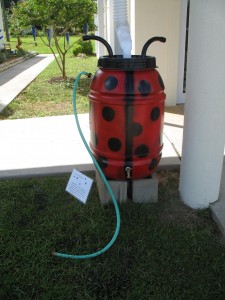
Building a rain barrel is a fun summer project for the whole family!
In addition to conserving water, rain barrels can be an effective means of reducing stormwater pollution. During a typical 1” rainstorm, an average home’s roof can yield 600 gallons of rainwater runoff that would normally flow downstream, picking up oils, greases, bacteria, trash, and pesticides along the way that end up in our water bodies. These pollutants eventually flow downstream to our creeks, bayous, and bays, contributing to non-point source pollution. Rain barrels interrupt that process by collecting stormwater runoff before it has a chance to pick up pollutants.
If you are interested in learning more about rain barrels or how to build your own, contact your local County Extension Office. Escambia County Extension will be hosting two rain barrel workshops this summer, the first on Friday, July 12 and the second on Saturday, August 3. There is a $42 charge for those wishing to build their own rain barrel after the workshop—all supplies and tools will be provided. To register for the full workshop, go online to the event registration website.
It is free to attend and hear the talk without building a barrel, but please reserve a spot by using the contact information below.

by Eddie Powell | Jul 1, 2013
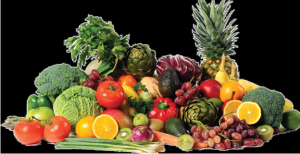
The key to eating home grown delicious vegetables, is selecting the correct time to harvest. Below are some of the easiest ways to identify the correct time to pick your most common summer veggies.

- Snap Beans: Pick them before you can see the seeds bulging. They should snap easily into two. Check daily. It doesn’t take long for beans to go from tender to tough.
- Corn: Usually 3 weeks after the silks form, they will turn dry and brown. The kernels should exude a milky substance when pricked.
- Cucumber: Cucumbers race to the harvest with zucchini. Check daily and harvest young. Timing and length will vary with variety. The fruits should be firm and smooth. Overripe cucumbers can be very bitter or pithy, even before they start to turn yellow.
- Eggplant: Slightly immature fruits taste best. The fruits should be firm and shiny. Cut rather than pull from the plant.
- Muskmelon (cantaloupes): The general rule of thumb is that the color should change to beige and the fruit will ‘slip’ from the vine when lifted. You should also be able to notice a sweet smell when ripe.
- Peas: The pea pods should look and feel full. Peas are sweeter if harvested before fully plumped. Peas really need to be tasted to determine if they are sweet enough.
- Pumpkins: Once the pumpkins have turned the expected color and the vines are starting to decline, check to make sure the skin has hardened enough that poking it with your fingernail will not crack it. You don’t want to pick your pumpkin too soon, because it will stop turning orange once its cut, but don’t leave them out if a hard frost is expected.
- Squash: Pick young and check often. The skins should be tender enough to poke your fingernail through.
- Tomatoes: Harvest tomatoes when they are fully colored and slightly soft to the touch. Gently twist and pull from the vine.
- Watermelon: The white spot on the bottom of the melon should change to a deep yellow when ripe. Some people can hear a change in the sound made when the melon is thumped with the finger. It should make a hollow sound when ripe, but this is a skill that must be developed.
For more information about projected harvest times, check out the Florida Vegetable Production Guide, published by UF / IFAS Extension. Enjoy and share your garden’s bounty, happy harvesting.
by Julie McConnell | Jul 1, 2013

Blueberries
Have you tasted the great local blueberries available this season? Want to start your own Blueberry garden? Now that Blueberry harvest is in full swing in the Florida Panhandle, it is a good time to discuss blueberry culture.
Blueberry plants in garden centers lure us in with bell shaped flowers or especially if already setting fruit. Before you take one home, make sure your site is suitable. Doing your homework before you plant is important, but especially so when you want to grow a plant with specific cultural requirements such as blueberries. Blueberries require well-drained acidic soil that contains organic matter, a minimum of 4-5 hours of sunlight daily, and space away from competing roots. Chill hour requirements and bloom time vary by blueberry types.
Soil in the Florida Panhandle has a wide pH range (measure of acidity) and can vary greatly even within a half-acre site. Having your soil tested prior to planting is critical to growing blueberries successfully because it is very difficult to lower pH if your soil is higher than the target range. Blueberries need acidic soil (pH 4.2-5.5) to be able to use micro-elements in the soil such as iron and zinc. As the pH increases, these nutrients become less available to the plant even if they are present in the soil in adequate quantities. Nutrient deficiency leads to weak plants and loss of vigor. Plan to test your soil before you purchase plants to ensure your site has the ideal pH range, visit your local UF/IFAS County Extension Office to obtain a soil test kit. For more details about how soil pH affects your landscape, please see EDIS SL256: Soil pH and the Home Landscape or Garden.
Sandy soils commonly found in North Florida tend to be low in organic matter. Incorporating soil amendments directly into planting beds or using mulches that decompose (such as pinestraw or wood mulch) will help increase organic matter in your landscape. Peat moss or pine bark can be incorporated into beds planned for blueberries or pine bark can be used as mulch. Adding organic matter will help retain soil moisture, which is beneficial to blueberries that have shallow root systems.
Retaining soil moisture is valuable to blueberries, however, the site does need to drain well to a minimum depth of 18 inches. Areas that remain wet for long periods of time increase the risk of Phytophthora root rot damage. If an otherwise ideal site does not drain well, consider building a raised bed or changing the location.
Four to five hours a day is the minimum sunlight needed for good blueberry production. Make sure your sunny site is at least 20 feet from building foundations and competing tree roots. Blueberry plants can get large, over ten feet in height and width! Plan to give them room to grow; with pruning they can be maintained around 7’x7’.
There are two main types of blueberries that grow well in Florida: the southern highbush and rabbiteye. Among those types, there are specific cultivars with low chill requirements that perform better in Florida than in other southern states. Rabbiteye blueberries are recommended for areas north of Ocala, southern highbush for central and south Florida. When choosing cultivars, you need to plant at least two different cultivars within the same type (rabbiteye with rabbiteye) and make sure that bloom time overlaps so that cross pollination can take place.
Rabbiteye cultivars recommended for the Panhandle are:
Early season
• ‘Beckyblue’
• ‘Bonita’
• ‘Climax’
Mid- to late-season
• ‘Brightwell’
• ‘Powderblue’
• ‘Tifblue’
• ‘Woodard’
• ‘Chaucer’
• ‘Bluegem’
For more information about blueberry site preparation, selection, pest management, and care please see EDIS CIR1192 Blueberry Gardener’s Guide.
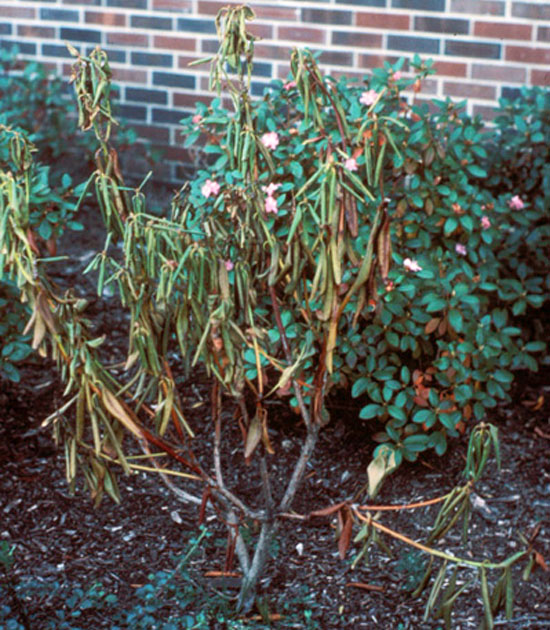
by | Jul 1, 2013
This summer parts of the Florida Panhandle have been blessed with ample rain, but coupled with high temperatures, this can be both a blessing and a curse.
Adequate moisture is critically important to landscape plants during hot weather, but too much rain or excessive watering also can bring problems. Wet soil combined with high temperatures can create stressful conditions for bedding plants, vegetables, shrubs and even trees – especially those just planted this year.
When the soil is saturated with water, pore spaces in the soil, which normally hold air, are filled with water. Since the roots of plants get the oxygen they need from the air in those spaces, the roots can literally drown in a soil that stays waterlogged over an extended period.
In turn, a sick root system leads to a sick plant. Plants in such situations often lose vigor, look wilted, turn yellow, are stunted and often die.

Symptoms of Root Rot on Azalea
Wet soil conditions also encourage fungus organisms that live in the soil to attack the roots or crown of a plant, thus causing rot. The crown is the area where the stem of a plant enters the soil. These disease organisms can cause die-back, inflict severe damage or even kill plants. Worse yet, once infection occurs, little can be done to help a plant affected by these disease organisms.
Plants with succulent stems such as impatiens and begonias, those that like cooler temperatures such as geraniums and dianthus and those that prefer drier, well-drained soils such as Indian Hawthorns are particularly susceptible.
Gardeners can take steps to help alleviate the situation. First , it is critical to adjust irrigation systems that are on automatic timers. Often seen are sprinklers unnecessarily watering at homes or businesses the day after or during a heavy rain simply because the timer turned them on. Turn off the automatic timer if the weather is wet, and turn the system on only when drier conditions occur.
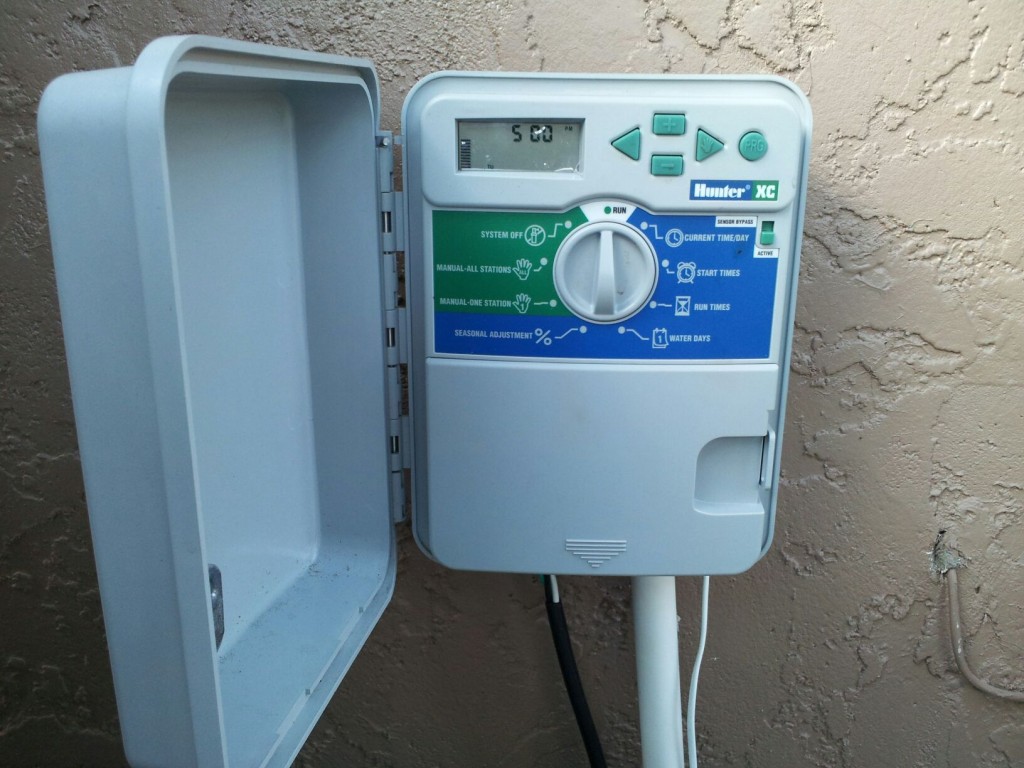
Home Irrigation Timer
Beds should always be well mulched, at 2-4 inches, to control weeds and maintain soil moisture. If garden beds are staying too wet, however, the mulch can be pulled back from around plants or removed entirely to allow the soil to dry faster. Just make sure keep weeds are kept under control while the mulch is off.
Plants affected by wet soils or root rot may look wilted even though the soil is moist. A plant showing these symptoms immediately after a period of prolonged heavy rain may benefit from soil aeration in its root zone. Using a garden fork by driving the tines straight down into the soil and pulling straight out in numerous places around the plant is helpful. This provides air to the roots and encourages the soil to dry faster. Just be sure you don’t dig with the fork.
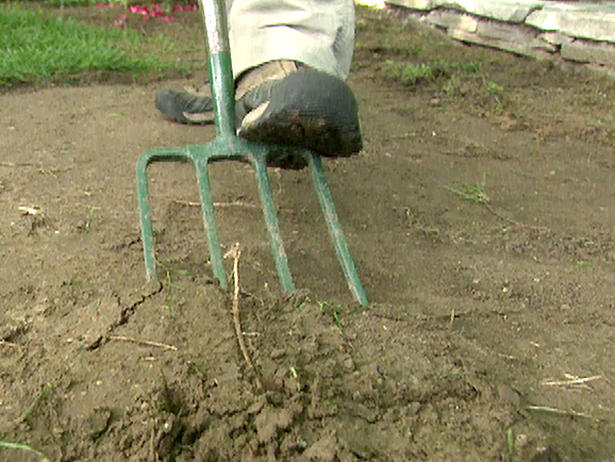
Gardening Fork
Fungal diseases that attack the foliage of many plants also are encouraged by rainy weather. Black spot on roses is prevalent even on fairly resistant varieties, and control is nearly impossible if it rains every afternoon. Cercospora leaf spot and Powdery mildew on crape myrtles can cause the leaves to turn yellow or red and drop off. The disease is not fatal, and the trees will recover without sprays, but flowering may be diminished.
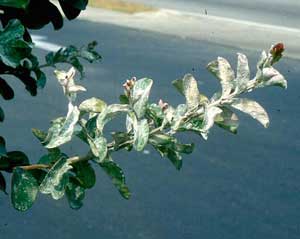
Powdery Mildew on Crape Myrtle
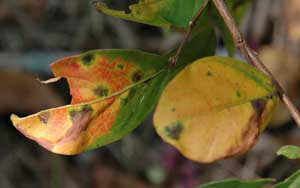
Cercospora Leaf Spot on Crape Myrtle
Other pests such as snails and slugs thrive and reproduce rapidly during rainy weather. These pesky critters chew holes in the leaves and flowers of plants and are particularly fond of soft-leaved plants such as impatiens, begonias and hostas. Try not to let their populations get out of control. Note that Toads should be left alone because they feed on slugs. There also are numerous baits on the market that will help control snails and slugs. You can even place a bowl up to its rim in the ground and fill it half full of beer to attract and drown many snails and slugs.
Frequent rains can leach available nutrients from the soil in the landscape. Landscape plantings should be evaluated with this in mind and be fertilized, if needed. If possible, controlled release fertilizer should be used in this situation. Plants rapidly growing now such as lawn grasses, summer bedding plants and tropicals like ginger and hibiscus are especially vulnerable.
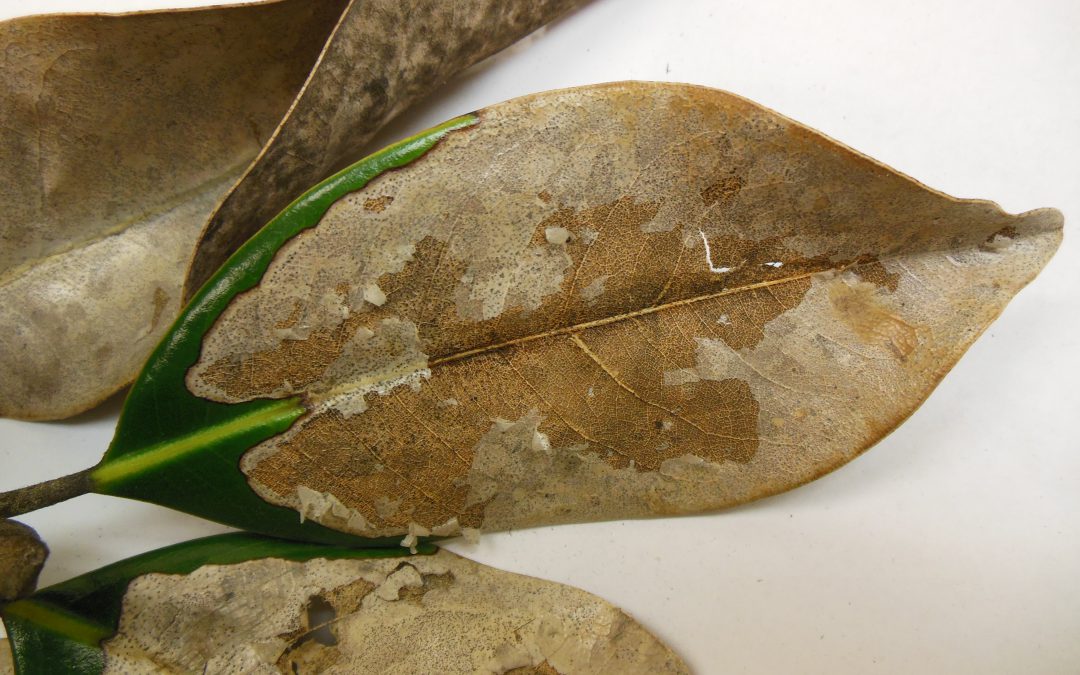
by Mary Salinas | Jun 21, 2013
We love our native magnolias in part because they are tough, easy to care for trees. The mainstay of southern gardens, they grace us with attractive thick, waxy leaves year round and sublimely fragrant and graceful blooms.
However, this past spring brought conditions that encouraged a fungal leaf disease known as anthracnose, most noticeably on the southern magnolia, Magnolia grandiflora. Affected leaves develop large irregular dead patches with a clearly defined border. The dead patches are a brownish gray and will flake and eventually deteriorate and fall away from the rest of the leaf. Fortunately it is rare for the disease to affect all branches of the tree and infection is somewhat spotty as you can in the photograph below.
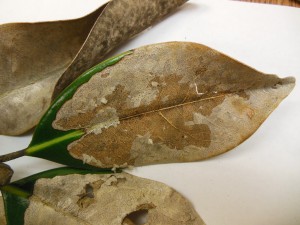
Credit: Mary Derrick, UF/IFAS Extension
Conditions that favor the development of anthracnose in magnolia are the cooler, moister conditions that the panhandle experienced this early spring. Spores overwinter on affected branches and in leaf litter and travel to their new hosts through rain, wind and splashing water.
View this article to learn more about the Southern Magnolia
[important]The good news is that this disease is rarely a serious threat to the long term health of the magnolia. [/important]

Credit: Mary Derrick, UF/IFAS Extension
But in order to avoid another infection next spring, remove and dispose of as many affected leaves as possible from the tree and certainly those that have fallen. Avoid irrigation that wets the leaves because the consistent presence of moisture on the leaf is a perfect incubator for anthracnose. Ensure that there is sufficient air flow around the trees. Fungicidal treatment is generally not warranted.














